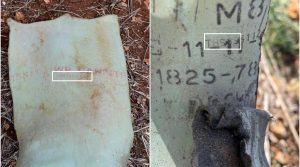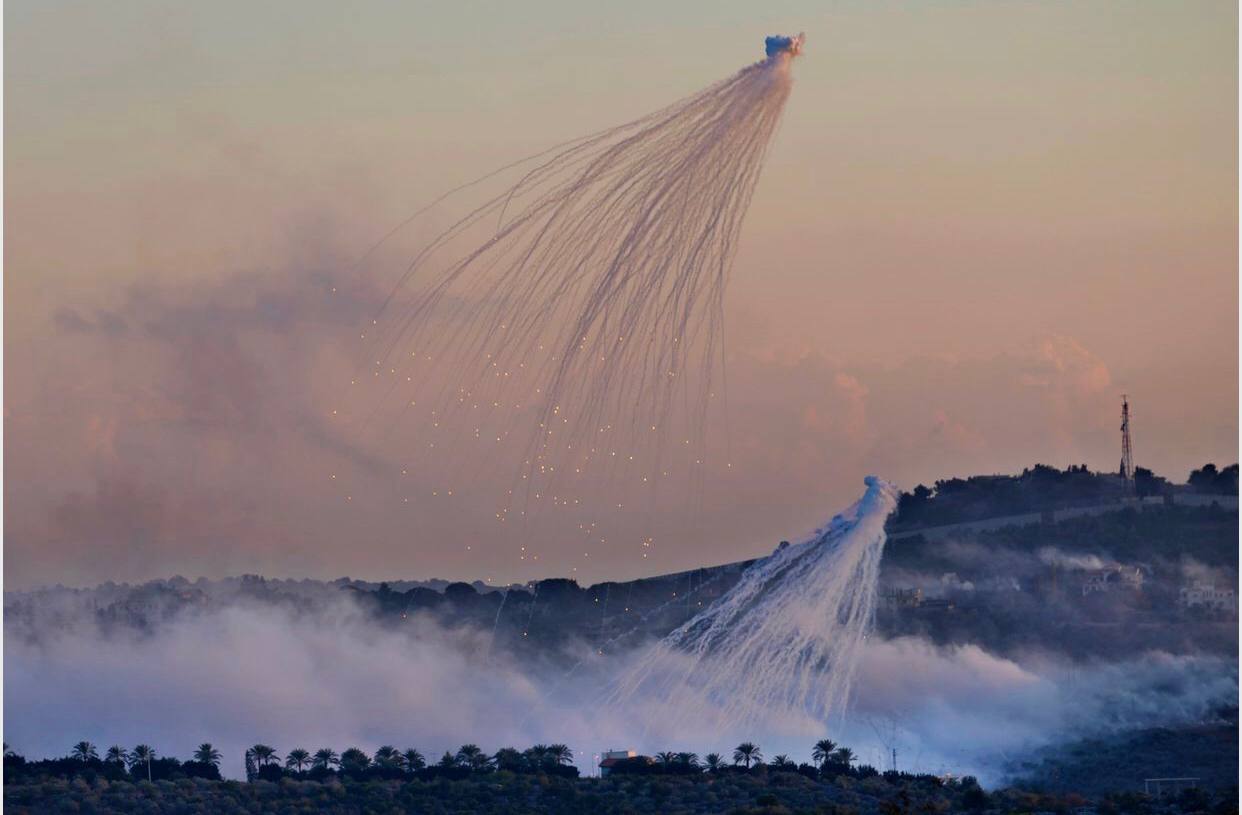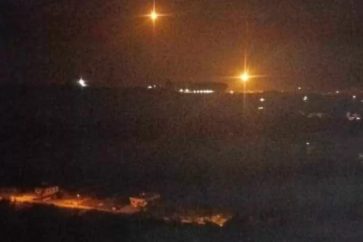‘Israel’ used U.S.-supplied white phosphorus munitions in an October attack in southern Lebanon that injured at least nine civilians in what a rights group says should be investigated as a war crime, according to a Washington Post analysis of shell fragments found in a small village.
A journalist working for The Post found remnants of three 155-millimeter artillery rounds fired into Dheira, near the ‘border of Israel’, which incinerated at least four homes, residents said. The rounds, which eject felt wedges saturated with white phosphorous that burns at high temperatures, produce billowing smoke to obscure troop movements as it falls haphazardly over a wide area. Its contents can stick to skin, causing potentially fatal burns and respiratory damage, and its use near civilian areas could be prohibited under international humanitarian law.
Of the nine injured in Israel’s attack on Dheira, at least three were hospitalized, one for days. Lot production codes found on the shells match the nomenclature used by the U.S. military to categorize domestically produced munitions, which show they were made by ammunition depots in Louisiana and Arkansas in 1989 and 1992. The light green color and other markings — like “WP” printed on one of the shells — are consistent with white phosphorous rounds, according to arms experts.

The weapons are part of billions of dollars in U.S. military arms that flow to ‘Israel’ every year, which has fueled Israel’s war on Gaza Strip, launched after Hamas attack on Oct. 7. At least 17,700 people, many of them civilians, have been killed since the Israeli operation began, according to the Gaza Health Ministry.
Photos and videos verified by Amnesty International and reviewed by The Post show the characteristic ribbons of white phosphorus smoke falling over Dheira on Oct. 16.
Israeli occupation forces continued to shell the town with white phosphorus munitions for hours, residents said, trapping them in their homes until they could escape around 7 a.m. the next morning. Residents now refer to the attack as the “black night.”
Most fled the town when the shelling stopped, returning during a week-long pause in fighting and leaving again when it resumed.
Uday Abu Sari, a 29-year-old farmer, said in an interview that he was trapped in his home for five hours during the shelling and was unable to breathe because of the smoke. He suffered respiratory problems for days after the attack.
“Emergency services told us to put something that was soaked in water on our faces, which helped a bit. I couldn’t see my finger in front of my face,” he said. “The whole village became white.”
White phosphorus ignites when in contact with oxygen and burns at temperatures up to 1,500 degrees, which can cause severe injuries. The chemicals left in the body can damage to internal organs, sometimes fatally, according to a Human Rights Watch report.
Residents speculated that the phosphorus was meant to displace them from the village and to clear the way for future Israeli military activity in the area.
The U.S. origin of the shells was verified by Human Rights Watch and Amnesty International. The same manufacturing codes also appear on white phosphorus shells lined up next to Israeli artillery by the city of Sderot, near the Gaza Strip, in an Oct. 9 photo.
The United States is under an obligation to track the behavior of its partners and allies who receive its assistance in order to comply with U.S. law, humanitarian law experts said. The use of white phosphorus is restricted under such international law because fire and smoke can be spread to populated areas, according to rights groups.
“The fact that U.S.-produced white phosphorus is being used by ‘Israel’ in south Lebanon should be of great concern to U.S. officials,” Tirana Hassan, the executive director of Human Rights Watch, wrote in an email. “[Congress] should take reports of Israel’s use of white phosphorus seriously enough to reassess U.S. military aid to Israel.”
The United States is not conducting real-time assessments of Israel’s adherence to the laws of war, Biden administration officials said.
A U.S. defense official said they were aware of reports about the attack, described in part by Amnesty International, which concluded the incident should be investigated as a war crime.
“White phosphorus fell onto several homes and ignited fires, incinerating furniture and stripping appliances to scorched metal. Remnants of the sticky, black chemical littered the ground 40 days after the attack and combusted when residents kicked at it.”
‘Israel’ has used the munition more than 60 times in Lebanon’s border areas in the past two months, according to data collected by ACLED, a group that monitors war zones. Lebanese Prime Minister Najib Mikati said on Dec. 2 that Israel’s use of the munition has “killed civilians and produced irreversible damage to more than 5 million square meters of forests and farmland, in addition to damaging thousands of olive trees.”
Source: The Washington Post




